

B2019
-
Posts
110 -
Joined
-
Last visited
Content Type
Profiles
Forums
Events
Gallery
Blogs
Store
Posts posted by B2019
-
-
1 hour ago, Alan de Enfield said:
Move cable 1 to the bus-bar and then from the bus-bar to 'earth'.
I would move the inverter cable to the bus bar.
I'd leave the Soar cable on the terminal.
Perfect thanks. When I move the earth cable to the bush bar do I actually need a cable running from the negative terminal to the bush bar?
-
14 hours ago, WotEver said:
I wouldn’t move the inverter cables to the busbar. Leave them going direct to the battery.
It doesn't make sense. Negative point - 1. Cable to earth, 2nd cable next battery, 3rd cable to inverter, 4th cable to Bush bar and then 5th cable for solar panels. Of course it looks like a spider but what else can I do?
-
14 minutes ago, Alan de Enfield said:
The idea is that you have only have one cable on each terminal (except where linking batteries together).
A SINGLE cable should go from the Black (negative) terminal to the busbar, and then all other cables / wires are tapped off the busbar, and then the same for the red (positive)
It looks as if you still have a 'multi-legged' spider on both your + & - terminals.
Atm I have wire from ground (the boat) to negative terminal, wire to inverter, wire to Bush bar and wire for solar. So should I connect inverter to Bush bar and wire from solar to Bush bar?
-
4 hours ago, Jen-in-Wellies said:
Are you sure the left hand one is smaller? The nuts look the same size, measured by spanning with my fingers across the screen. Is it an optical illusion from the lack of a plain washer at the bottom of the stack?
If they are all the same size, then it doesn't matter which the battery lead goes to. If they are different sizes, then put the battery lead on one of the big ones.
Jen
No. One of them is 6mm and rest are 8mm.
Hi guys,
How is this looking now?
I've still got to put the bush covers on.
-
-
1 hour ago, Tony Brooks said:
And does it have the flame arresting gauze in it?
Yeah it does. I bought the cap from ASAP supplies.
"The Perko diesel deck filler suits 38mm (1-1/2") diesel hose and 16mm (5/8") vent hose. This 0540 deck filler features an integral tank vent with a flame arrestor gauze and an anti-surge valve".
U.S.C.G. Safety Standards, 33 CFR 183
-
 1
1
-
-
28 minutes ago, WotEver said:
And is the filler arranged such that any spilt diesel cannot enter the boat? This is usually dealt with by a 1/2” upstand around the filler hole so that any spilt diesel is routed to the water (not very environmentally friendly but them’s the rules).
I accidentally spilt some fuel today and it ran into the water as it's positioned on a tilt. No fuel got into the boat. I could use some sealant around the cap?
-
5 minutes ago, Tony Brooks said:
If the vent is in the filler cap have a horrible feeling the vent needs to terminate above the filler but I am sure you checked the BSS on this point before buying.
The filler hole is below the vent hole.
-
-
12 minutes ago, Alan de Enfield said:
Ah - OK so they drop down behind the battery then (not onto the terminal)
Next point -
you do need a lid to the battery box to meet the BSSC requirements - do you have one ?
the battery box must be strong enough to retain the batteries if the boat heels and 60kgs of batteries start sliding about - is it ? (it looks a bit flimsy / unattached to the wall)
My BSS examiner didn't say anything about box just that the wires were too thin, no battery isolater, fuse box cover missing, loose wiring.
I've got a box cover. Just need to make it look nicer.
-
15 minutes ago, Alan de Enfield said:
There appears to be a couple of 'black' wires going from the negative terminal (bottom left) up to a positive terminal top right
Why ?
What are they ?
Ideally you only want a single wire (maximum two) on each terminal so where you have 6 wires on both the + AND - terminals you should ideally wire them to a busbar and a single wire from the bus bar to the battery terminal.
Example of a Busbar (basically a big heavy duty terminal block)
I see. I've seen them in Chandler. I will buy a positive and negative Bush bar and I will show you when I done. The two small black wires are going to negative terminal for bilge pump and solar.
-
-
1 minute ago, cuthound said:
Positive from solar panel to positive on battery, and negative from solar panel to negative on battery.
Sorry what is meant is that I use to same positive port where the power goes out on the battery for the positive wire coming from the solar panel to the positive port on the battery.
-
Thanks for both of those links. Of great help ?.
I'm just fixing my solar panels today. Fuse and cut off switch . Went to the chandler and got red and black ocean flex cable to replace brown and blue cable. I've got three batteries. One end is connected to earth and other end is positive running pumps ( will go through fuse box) Where should I put negative and positive cables coming from solar panels? Coming from same end?
-
21 hours ago, WotEver said:
Take a read of this as a good primer for wiring...
http://www.smartgauge.co.uk/cable_type.html
Once you’ve read it feel free to come back with any queries

Remind me again where you are?
In Hertfordshire
-
2 minutes ago, Alan de Enfield said:
It would be all for the best if you could remove the Grey 'Twin & Earth' and replace it with proper 'flexible' wiring.
Flexible wires are recommended for a reason (and compulsory for boats built to the RCD standards since 1998)
Not without knowing what's at the other end.
If they are connected to (say) a 2000 watt inverter that draws 200 amps, a 30amp terminal block would soon disappear in a puff-of-smoke.
Connected to X2 12 volt water pumps.
-
37 minutes ago, WotEver said:
Short answer - YES, DEFINITELY.
Longer answer is along the lines of Alan’s post. You won’t need to rewire the negatives, simply replace the fuse box with a busbar. If (hopefully) the positives all come from a common busbar then that’s where you could fit the fuse box. Obviously if the location is inconvenient then rewiring as appropriate will be required. Either way, it’s a fair amount of work.
As the electrician obviously has no idea what he’s doing with 12V boat electrics can we confirm that he has used multi-strand cable? Did he do any volt drop calculations?
No multi strand cable used. I've got two grey household wires running two water pumps in the boat from the previous owner. Anything I add to the boat in the future I will use arctic cable. I've got most of the tools needed for the job ( soldering iron, drill etc) I just need to get crimp tool. volt drop calculation ?.
I'm doing everything myself on the boat now as NO one on the river can be trusted so any advice anyone can give would be of massive help!
Just another question for you - where the red wire comes out from the battery and then is connected to 3 cables that go to the fuse box should I use a 30a terminal block?
37 minutes ago, WotEver said:Short answer - YES, DEFINITELY.
Longer answer is along the lines of Alan’s post. You won’t need to rewire the negatives, simply replace the fuse box with a busbar. If (hopefully) the positives all come from a common busbar then that’s where you could fit the fuse box. Obviously if the location is inconvenient then rewiring as appropriate will be required. Either way, it’s a fair amount of work.
As the electrician obviously has no idea what he’s doing with 12V boat electrics can we confirm that he has used multi-strand cable? Did he do any volt drop calculations?
No multi strand cable used. I've got two grey household wires running two water pumps in the boat from the previous owner. Anything I add to the boat in the future I will use arctic cable. I've got most of the tools needed for the job ( soldering iron, drill etc) I just need to get crimp tool. volt drop calculation ?.
I'm doing everything myself on the boat now as NO one on the river can be trusted so any advice anyone can give would be of massive help!
Just another question for you - where the red wire comes out from the battery and then is connected to 3 cables that go to the fuse box should I use a 30a terminal block?
-
I'm just adding fuse and breaker switch for bilge pump and solar panels myself I've so noticed that my electrician has put all the negative wires through the fuse box instead of the positives. Should I change this so all all positive wires go through fuse box?
-
Another question for you guys. Does there need to be a cut off switch and fuse between the solar panels and batteries?
-
I could just leave it and fit another isolater to the positive as well. Job done.
-
4 hours ago, sirweste said:
I would second the advice from Alan of finding a local welder, there's a few knocking about on boats, to weld in 2 or 3 sheets of steel to make the permanent tank.
I'd be surprised if this were harder than fitting and securing a "auxiliary" tank.
Also, I'm not sure where you are located, but I have a hydraulic crimp tool you're welcome to borrow should you wish to redo some of the electrics yourself. I can offer some advice too.
I'm on the Tring summit at the moment, heading towards Berkhamsted.
P.S. your engine looks awesome!!!!
Sounds good. Thanks. It runs nicely.
I got a boat electrician to do my electrics the other day. He has put the emergency cut of switch on the negative wires. I've been checking online at diagrams but they run the switch through the positive. Can anyone advise?
-
29 minutes ago, Alan de Enfield said:
Your boat, your choice but personally I'd go with a conventional type of 'built in tank'.
You are looking at spending £200+ to get all the vents, pipes, bits & pieces and a 40 litre tank (say 35 litres usable) that you are going to need to fill every couple of days (or so) and I reckon that you may have some work to do to convince an examiner that its all compliant.
Anything out of the ordinary is always a 'no-no', remember these people are often not qualified engineers (marine or otherwise)
Assuming it is a steel NB.
For £200 you could get a lot of welding & cutting done and end up with a 300-500 litre tank that is 'simple' and fully compliant
It's only a small boat. It's never going to be able to hold 300-500 litres of fuel. 60 litres will be the max for the space I have. I'm getting everything order from a BSS officer who works at Boutlers Chandley.
-
9 minutes ago, Alan de Enfield said:
Its obviously difficult without seeing the actual boat - but - many for boats the tank is simply the hull of the boat with a piece welded across the back end to form the 4th side (if you follow me).
Are you planning on putting the 'new' tank in the place of the 'old' tank, or just letting it sit on the rear deck, or ………………….?????
Is this a steel Narrow Boat or a GRP cruiser
Where has it been for the last 20+ years, why has it not needed a BSS, or, has it previously passed ?
If you are still looking at that 33 litre plastic tank - just consider that at 1.5 litres diesel per hour you only have 20 hours 'range' and to avoid the possibility of running out you'd probably need to 'fill up' virtually every day.
Do you have any form of diesel heating ? (this would use another litre per hour)
The new tank will go where the old tank is. They do another tank that will fit in which is 41 litres. First BSS on the boat.
-
26 minutes ago, Alan de Enfield said:
You seem to be going an expensive, complicated and 'bodge' method of doing something.
What are you actually trying to achieve ?
Is it a diesel or petrol engine ?
Remember that if petrol, you can legally only 'carry' a maximum of 30 litres in 'loose tanks'
If you store petrol at home, or at a club/association or similar premises
What if I only store a small amount of petrol?
You can store up to 30 litres of petrol at home or at non-workplace premises without informing your local Petroleum Enforcement Authority (PEA).
You can store it in:
- suitable portable metal or plastic containers
- one demountable fuel tank
- a combination of the above as long as no more than 30 litres is kept
For these purposes 'premises' are as defined in the Health and Safety Work Act, etc. 1974 and includes, for example, motor vehicles, boats and aircraft.
How much petrol can I store on a vehicle?
You can store up to 30 litres of petrol in a maximum of 2 suitable containers in your vehicle. For the purpose of these Regulations a ‘vehicle’ is interpreted as any type of vehicle so includes boats, aircraft and hovercraft. This type of storage counts towards the total you can store at non workplace premises. Carriage of petrol is covered by the Carriage of Dangerous Goods (CDG) and the European agreement (ADR).
http://www.hse.gov.uk/fireandexplosion/petrol-storage-club-association.htm
https://www.asap-supplies.com/perko-deck-filler-0540dpgchr
Ok cool so.... I've taken out my old diesel tank as it's not BSS compliant. Fuel outlet and inlet both come out of the bottom of the tank and there's no air vent on the tank going to the outside of the boat. Turns out it's a tank off an old truck. I've got two options: tank the old tank to a boat yard, get it adapted and then drill a new air vent hole in the boat. Second and easier ( more expensive option maybe) - buy a new BSS CE approved compliant fuel tank and fit new air vent fuel cap.

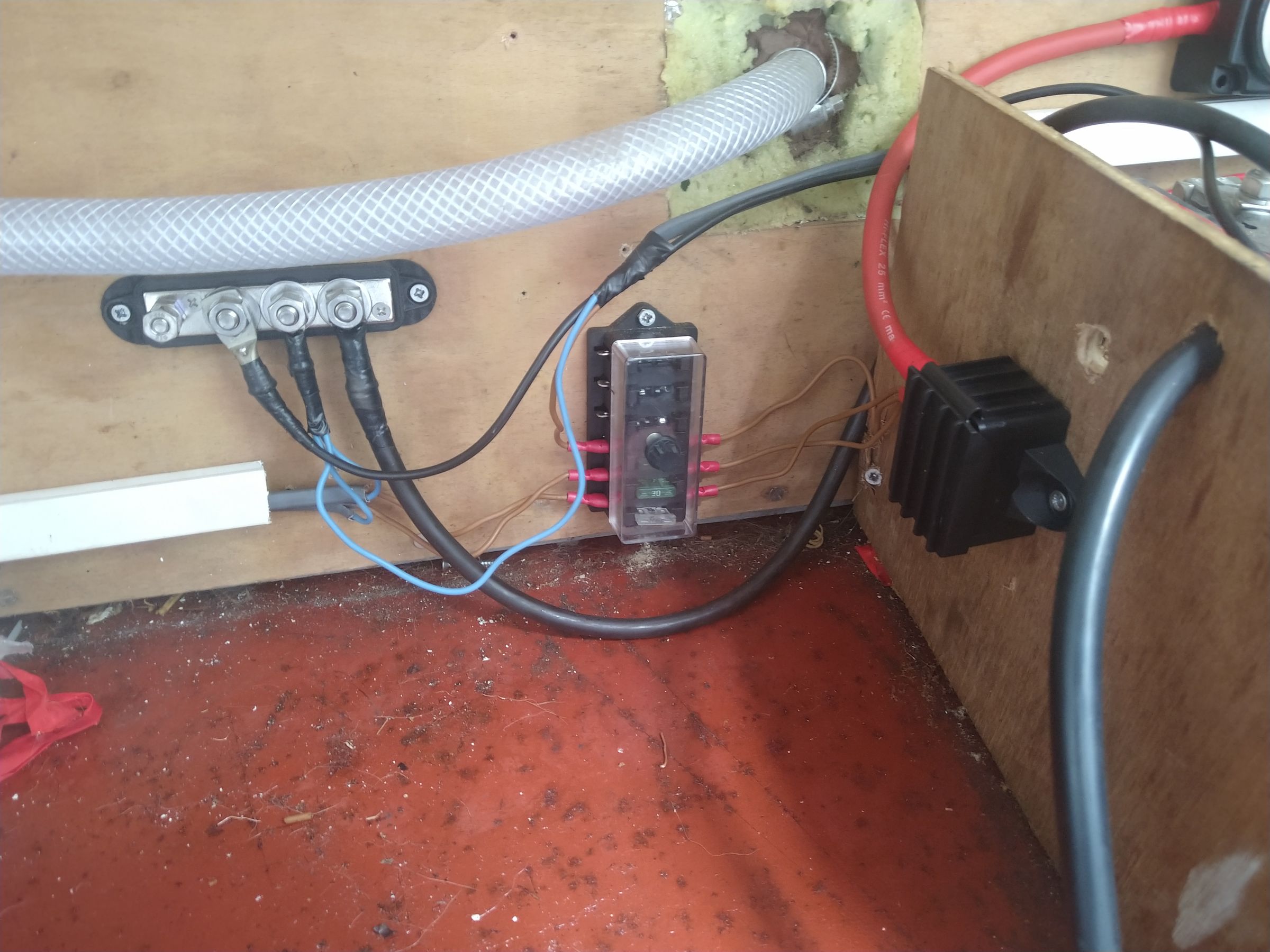
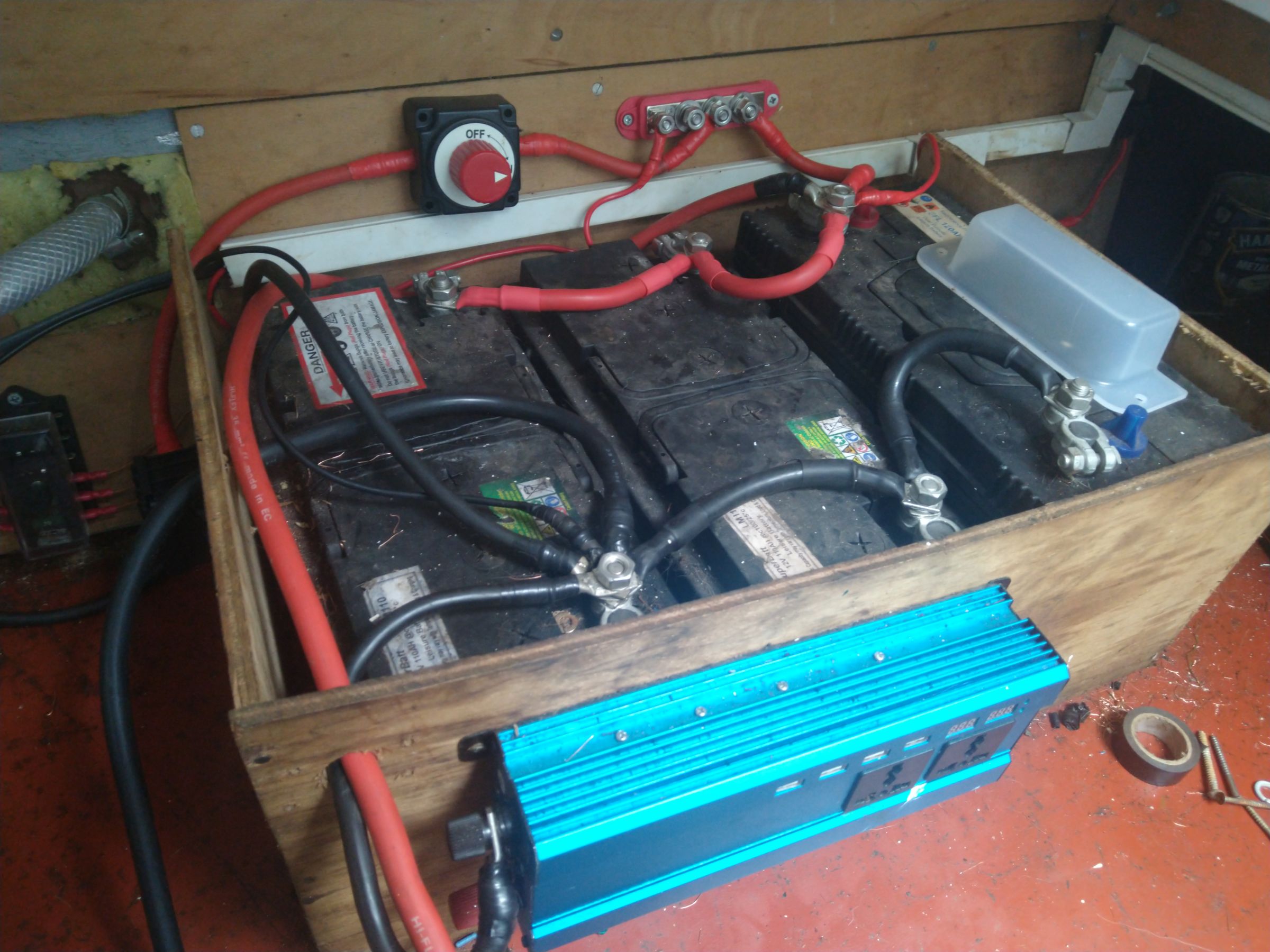
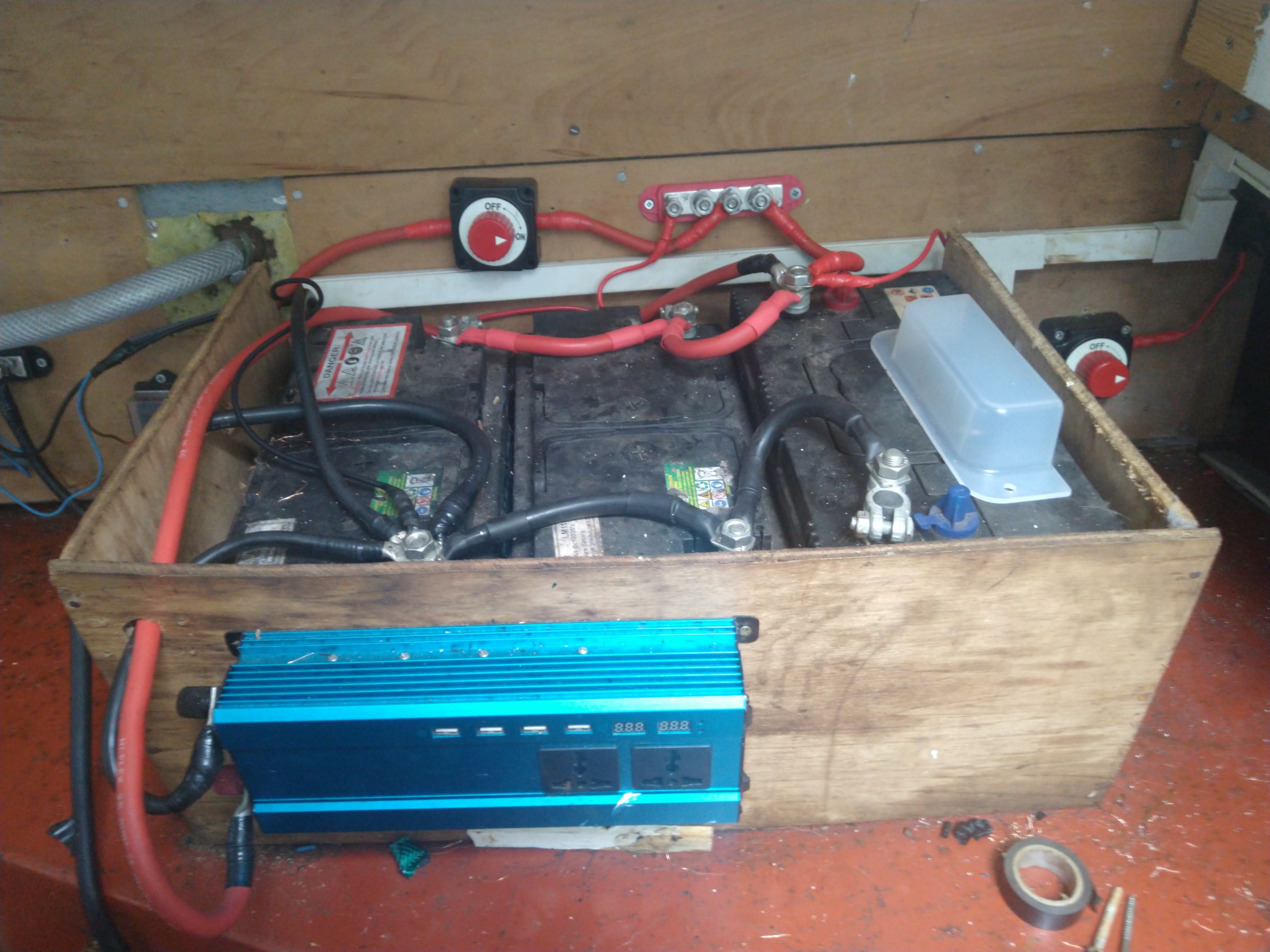
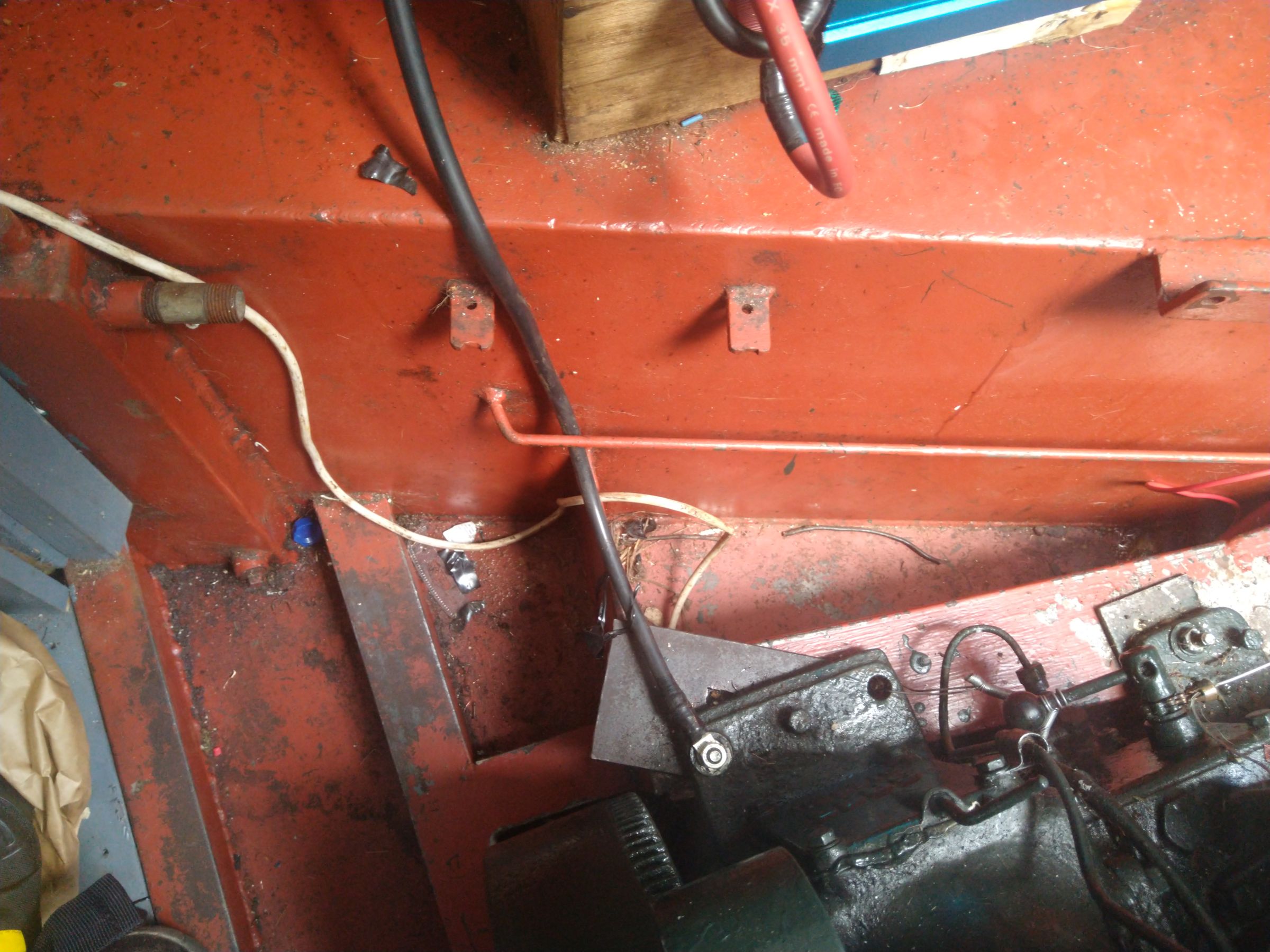
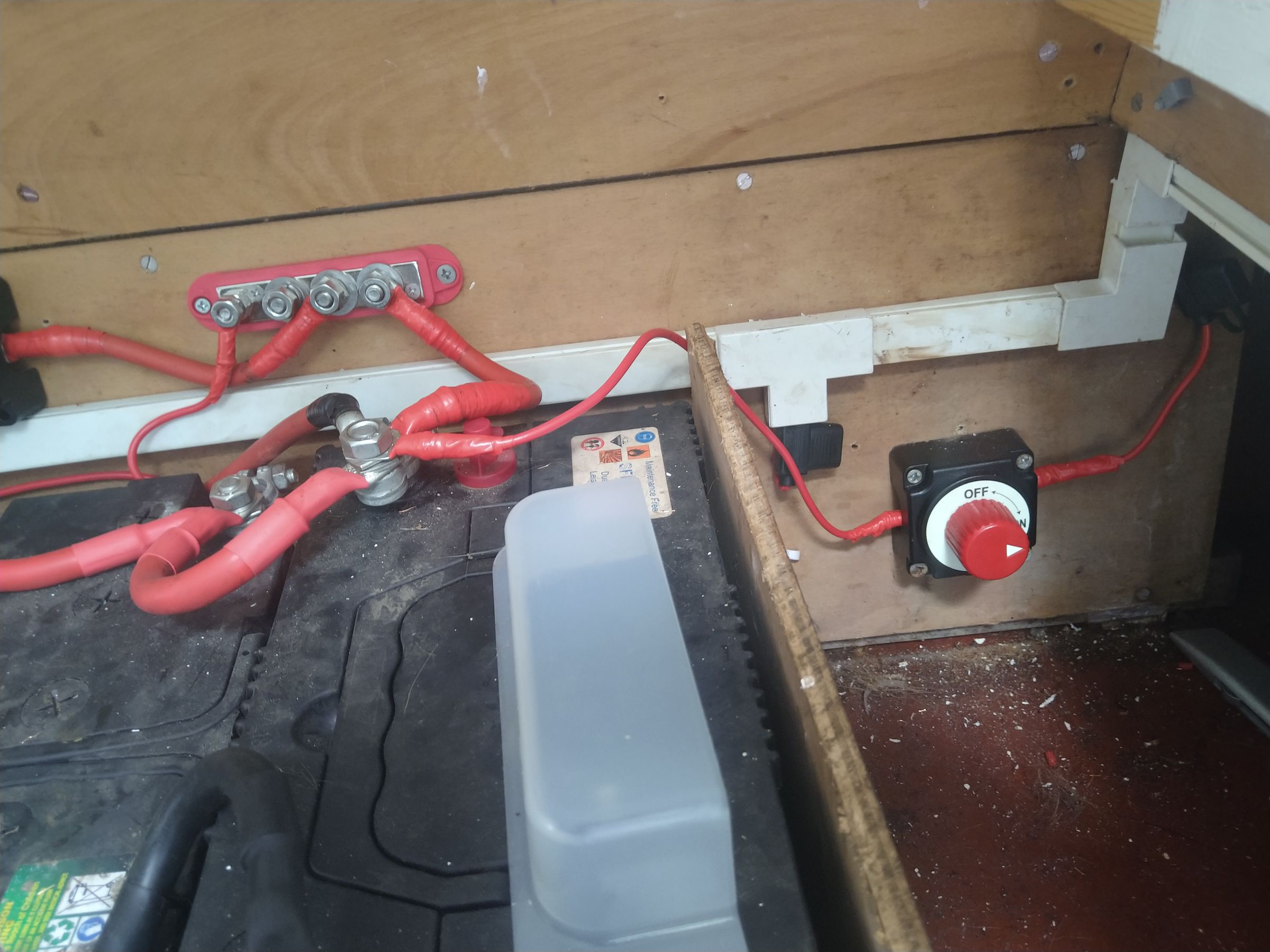
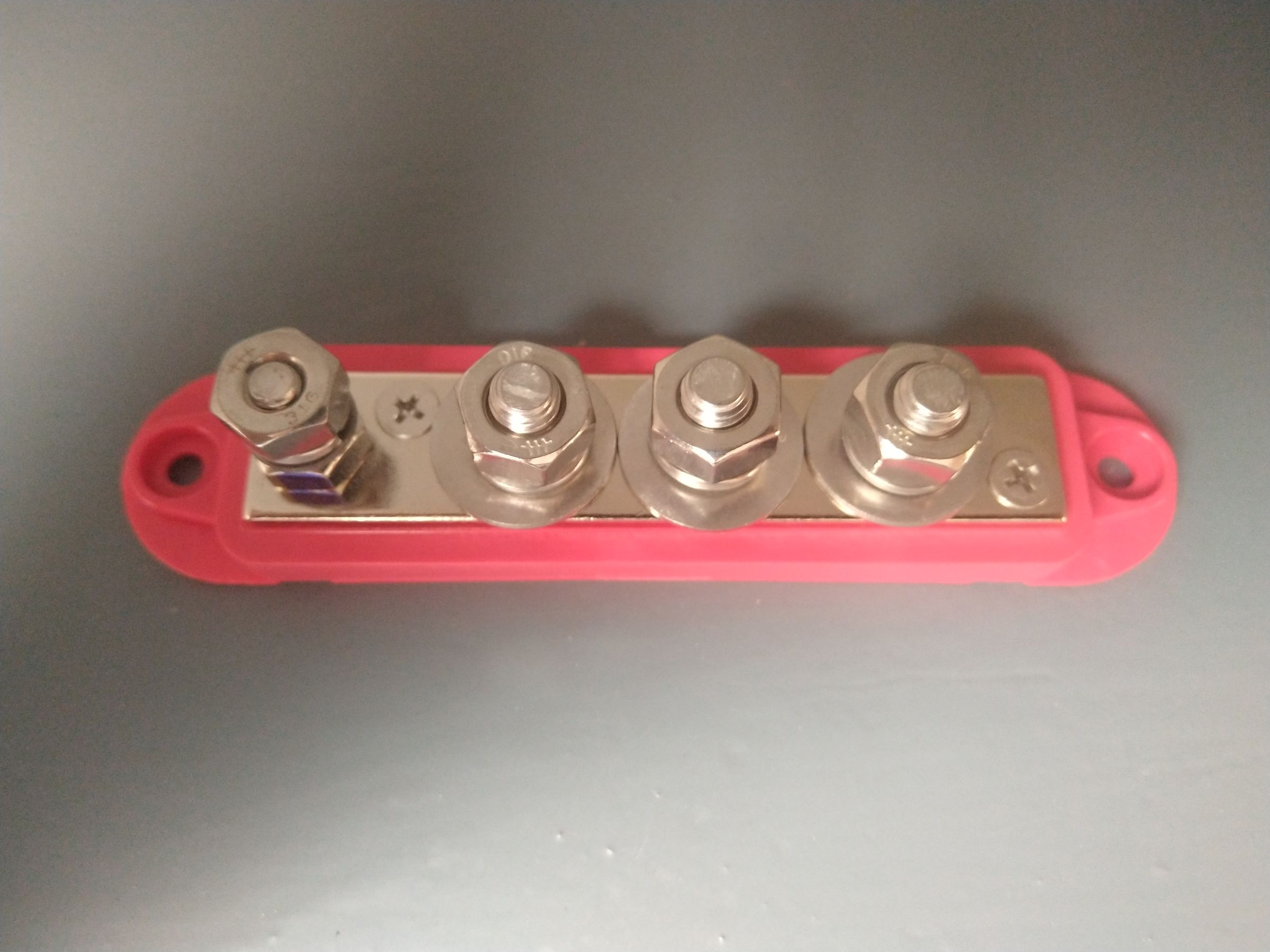
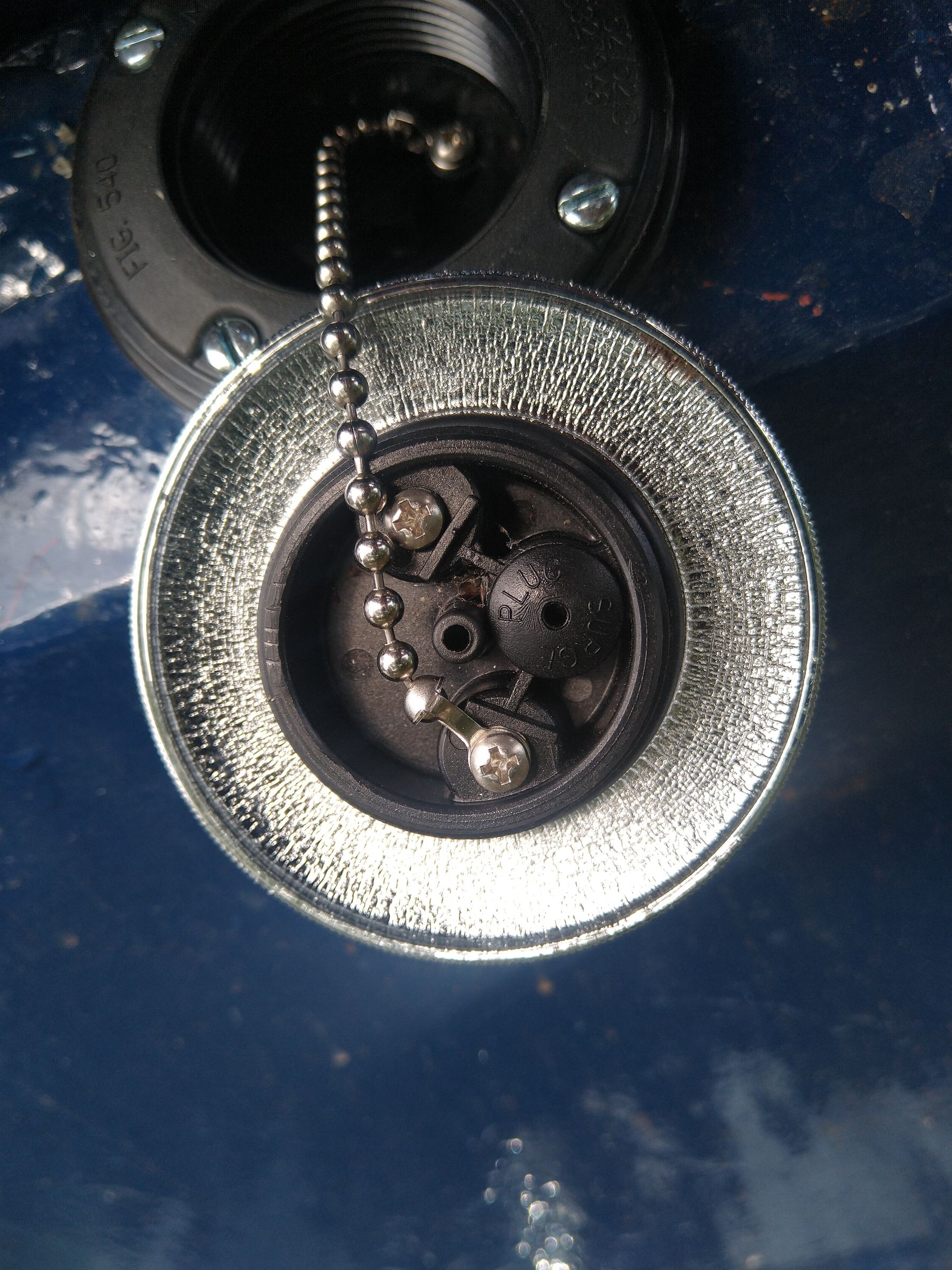
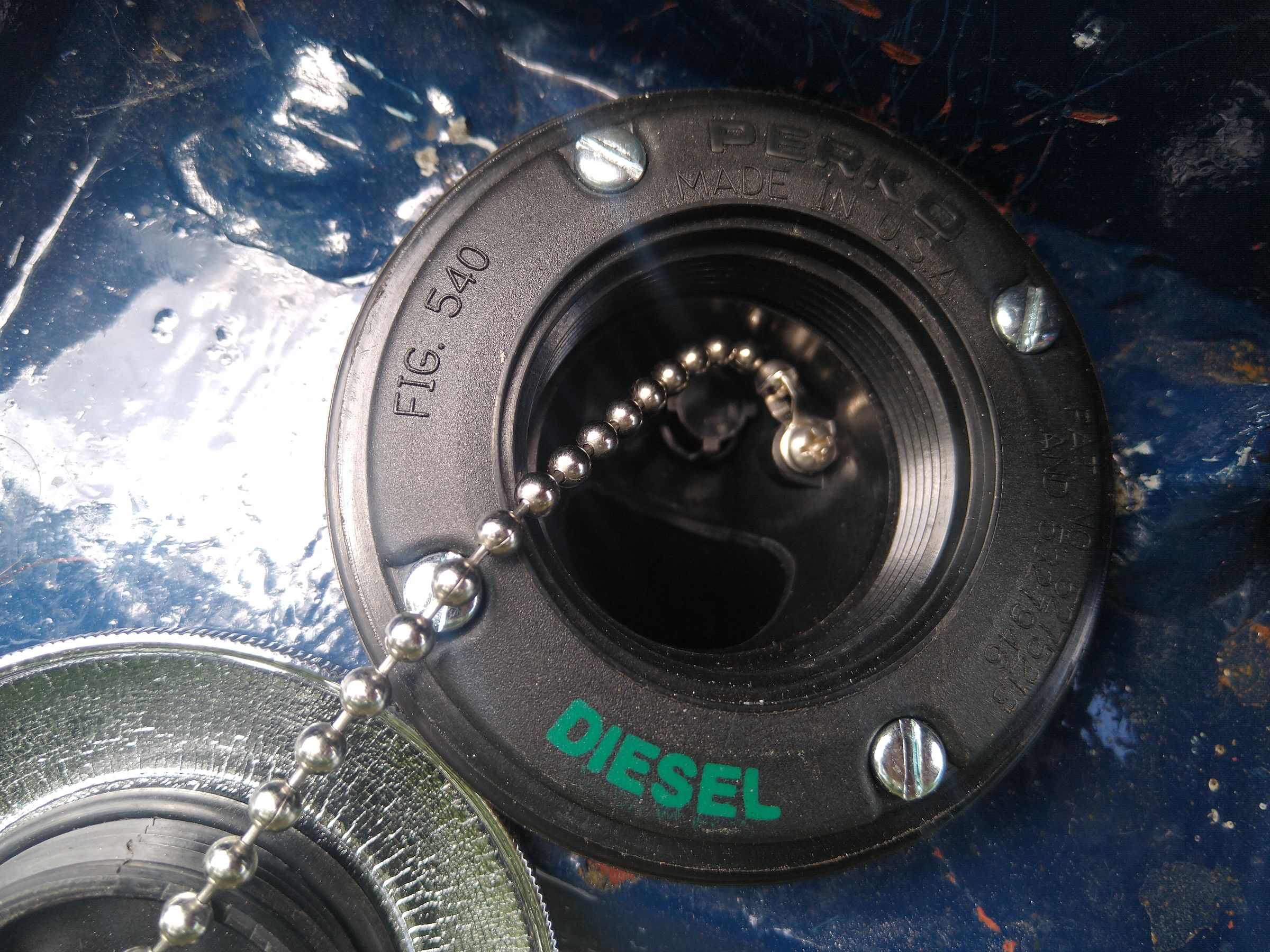
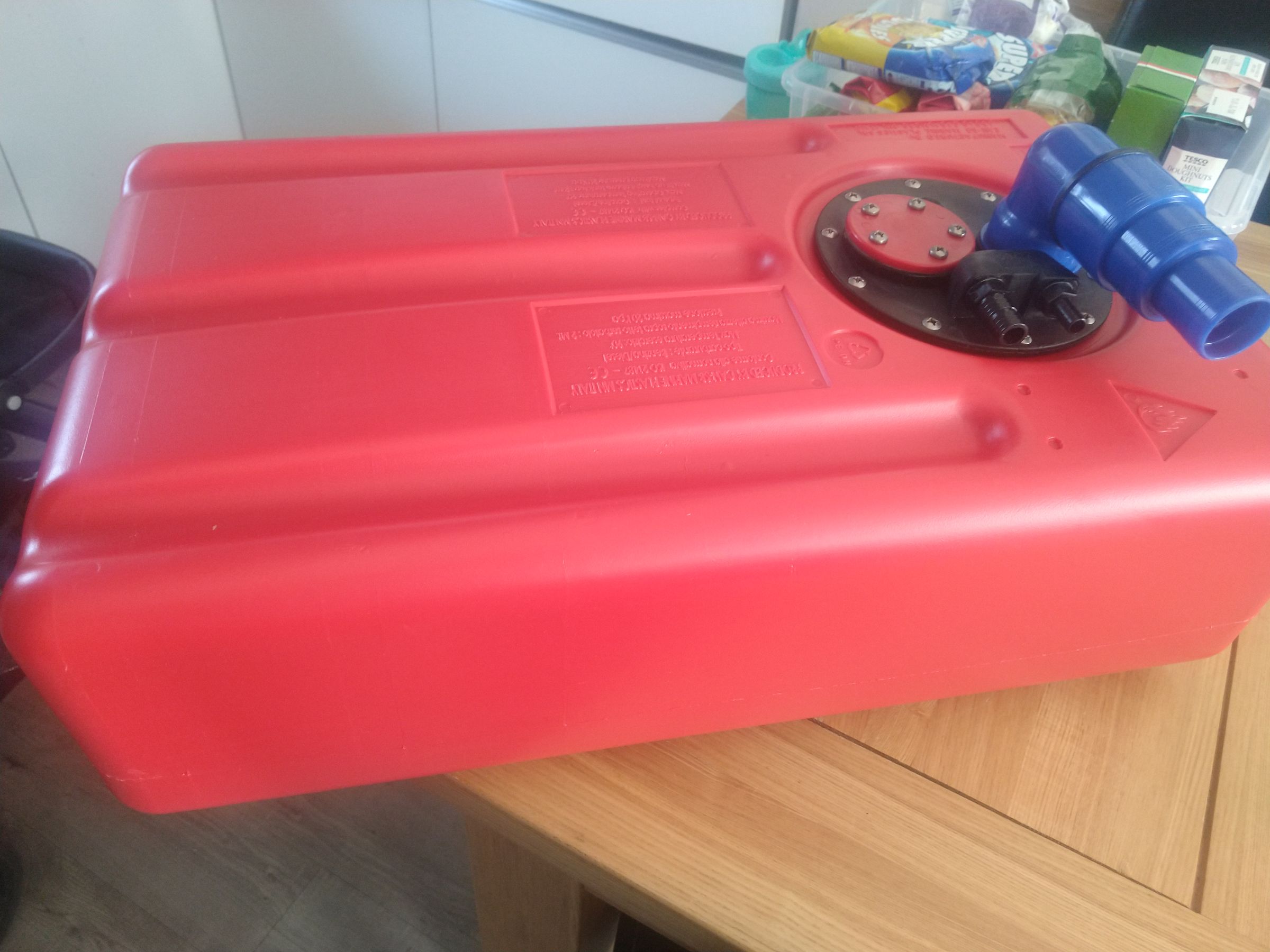
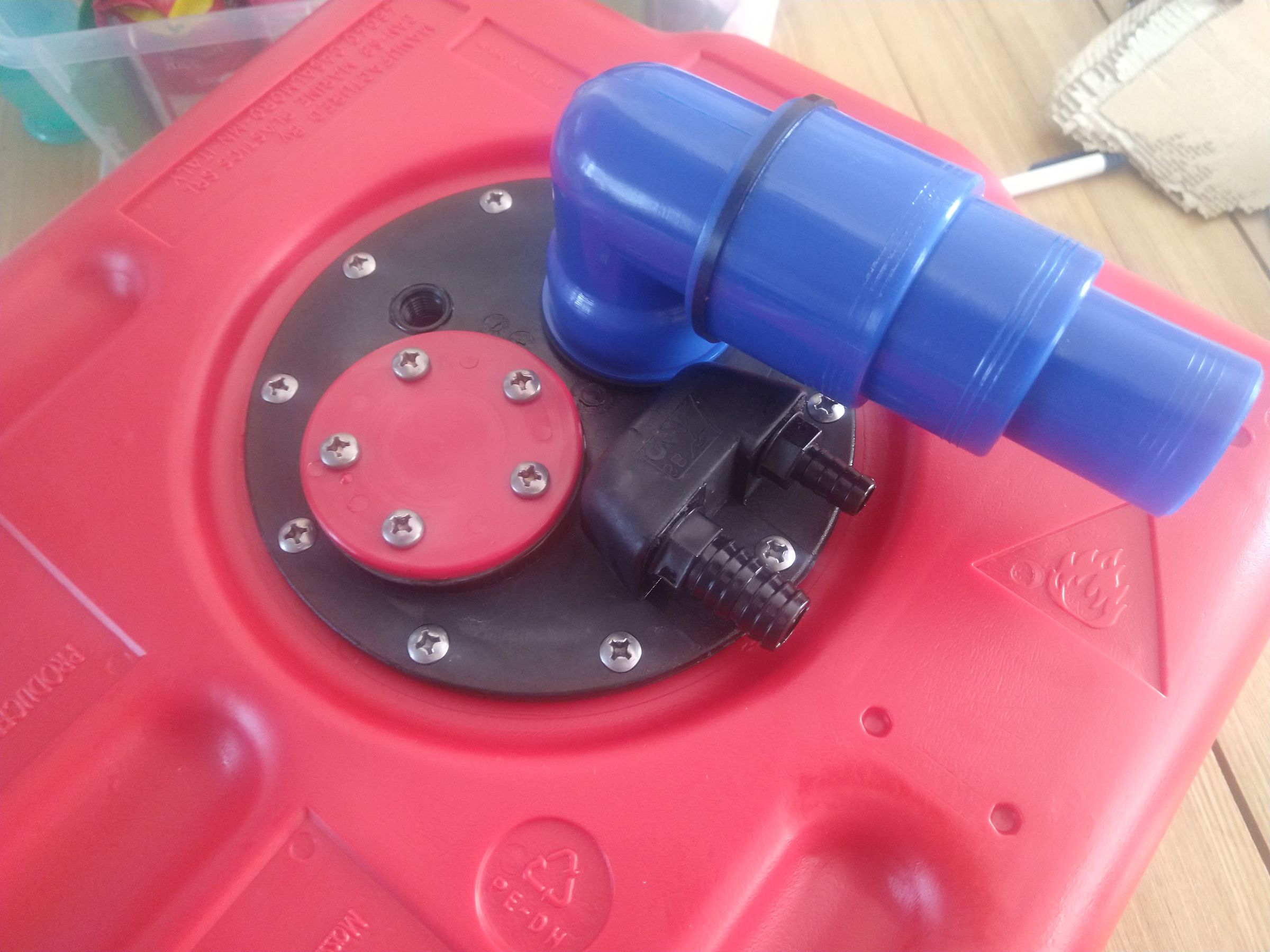
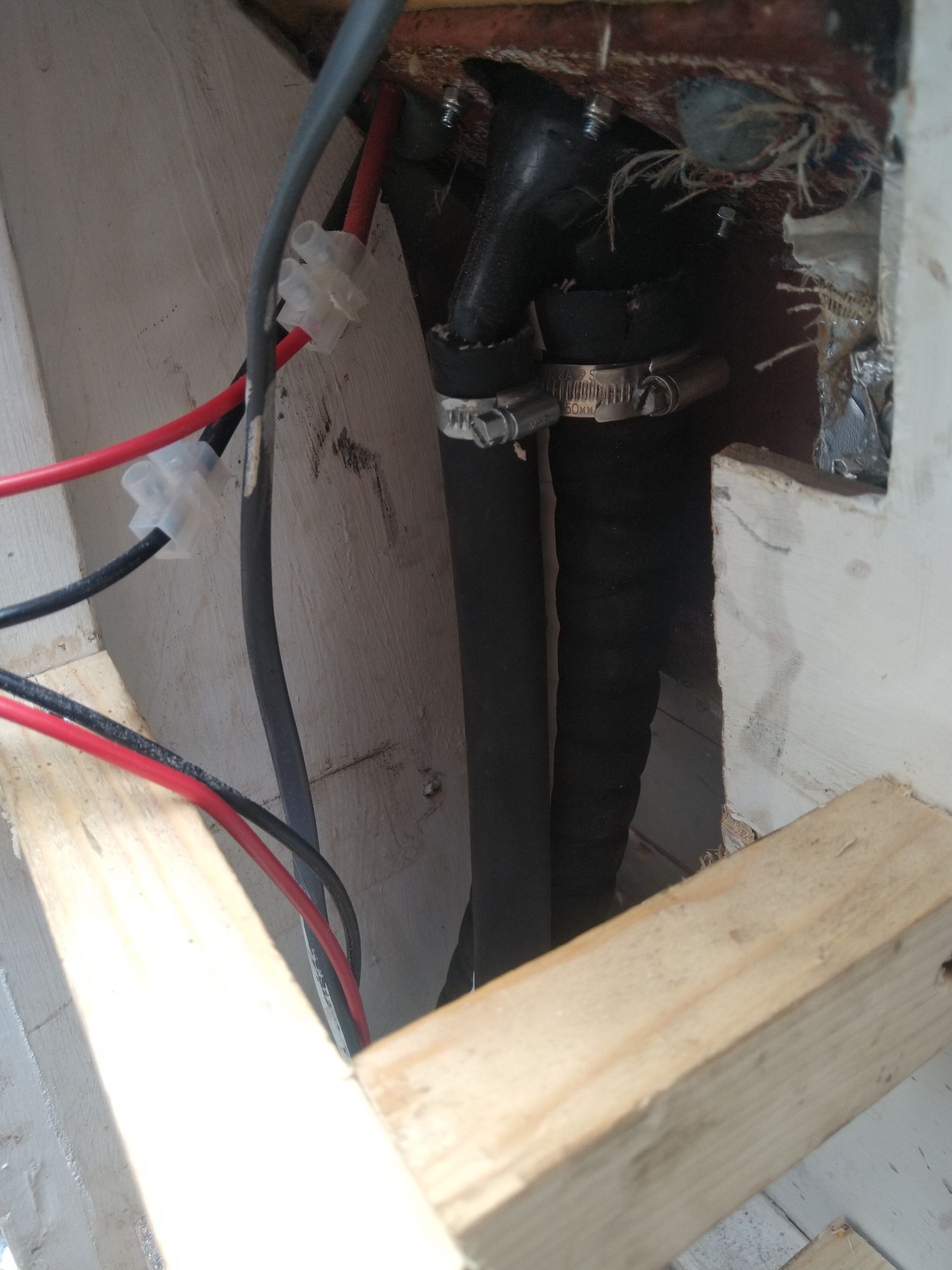
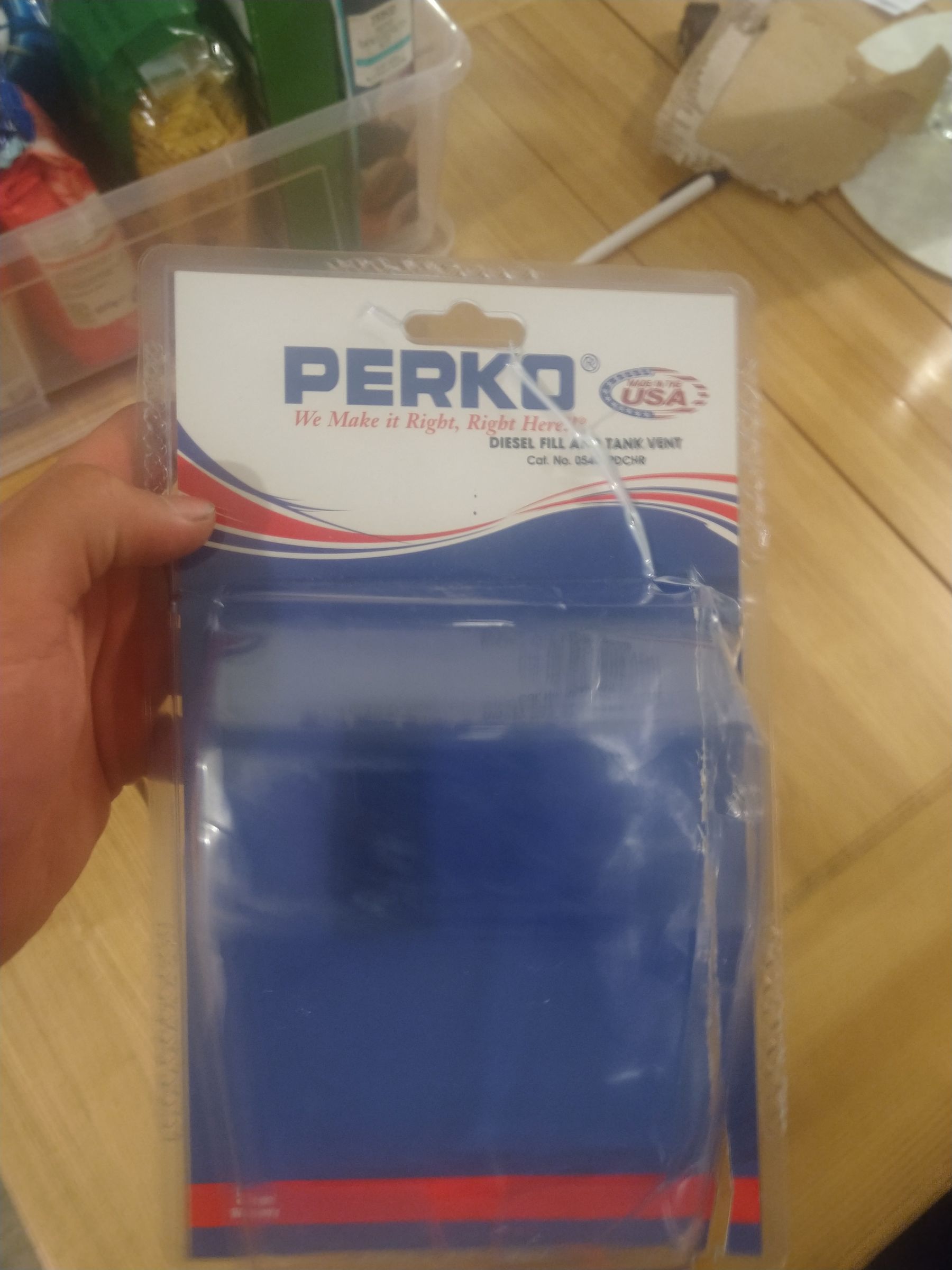
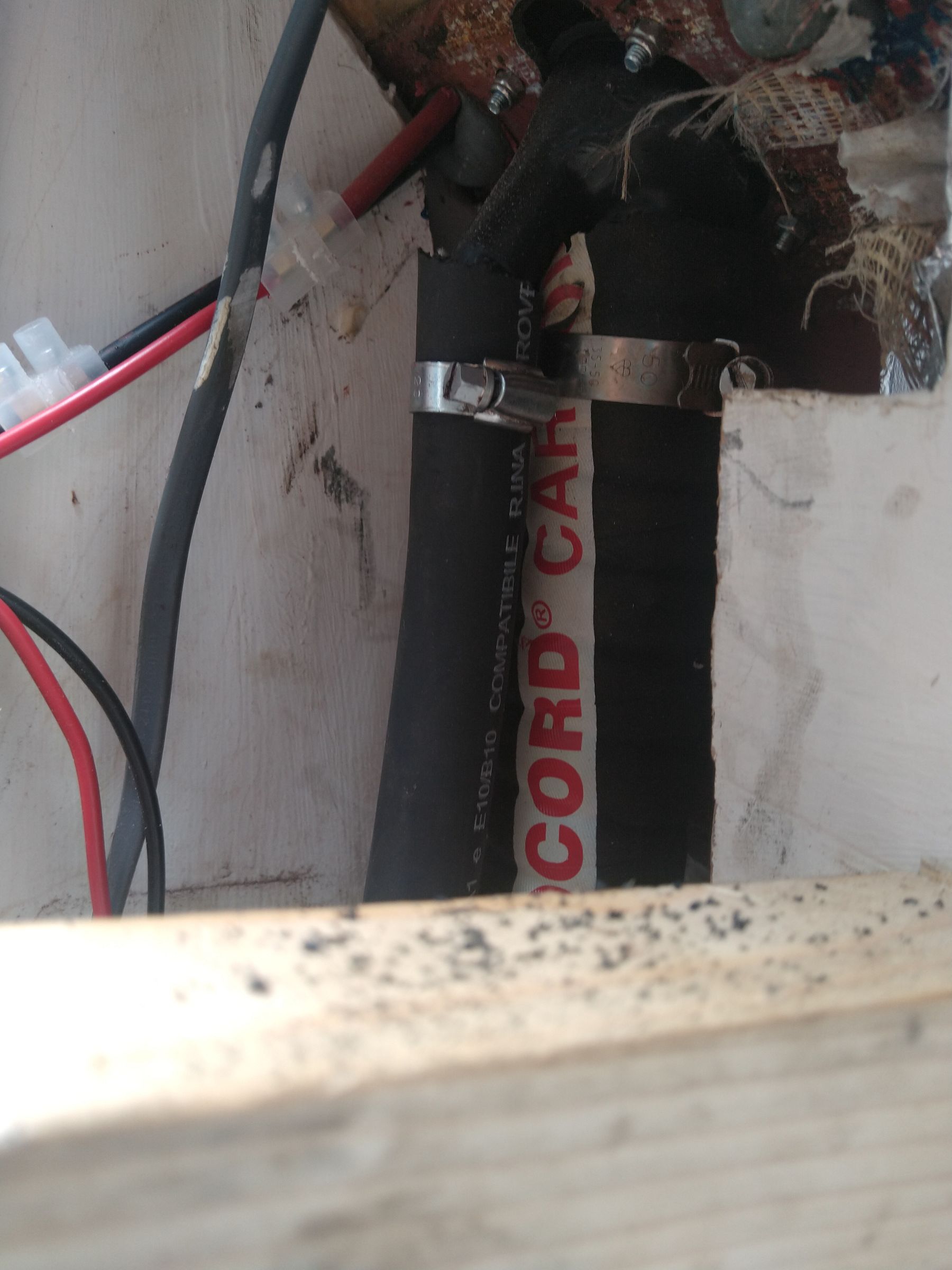
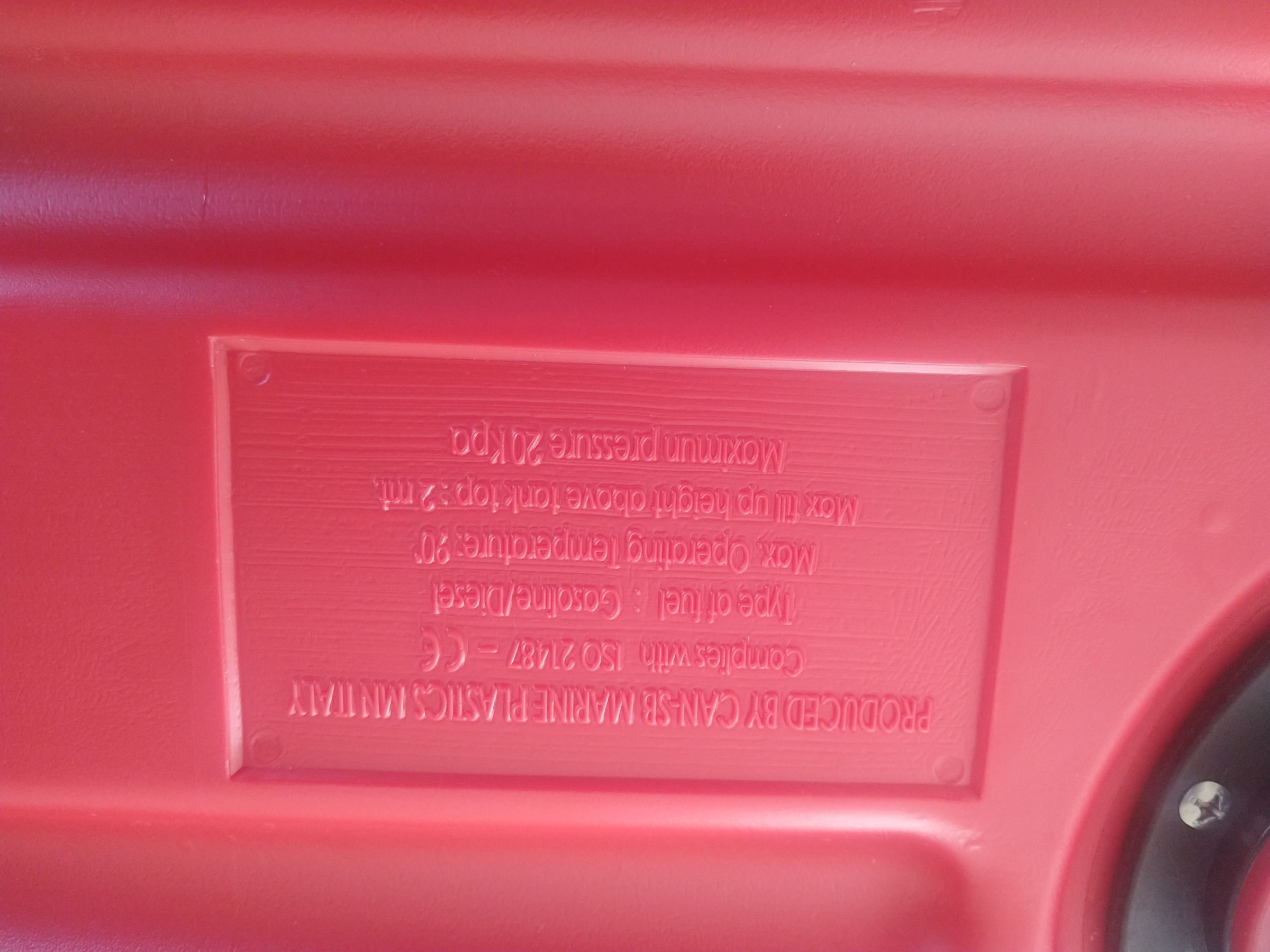
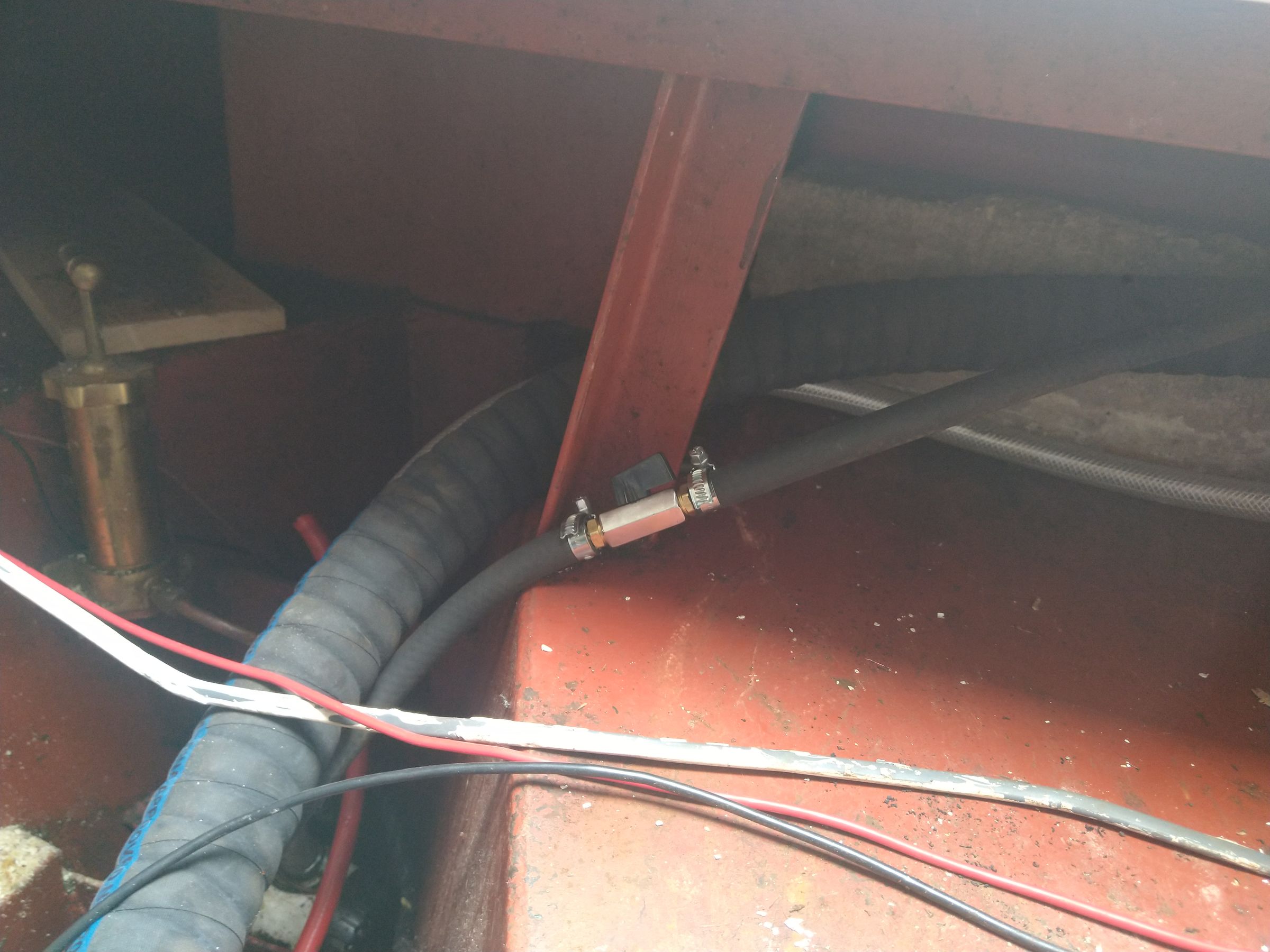
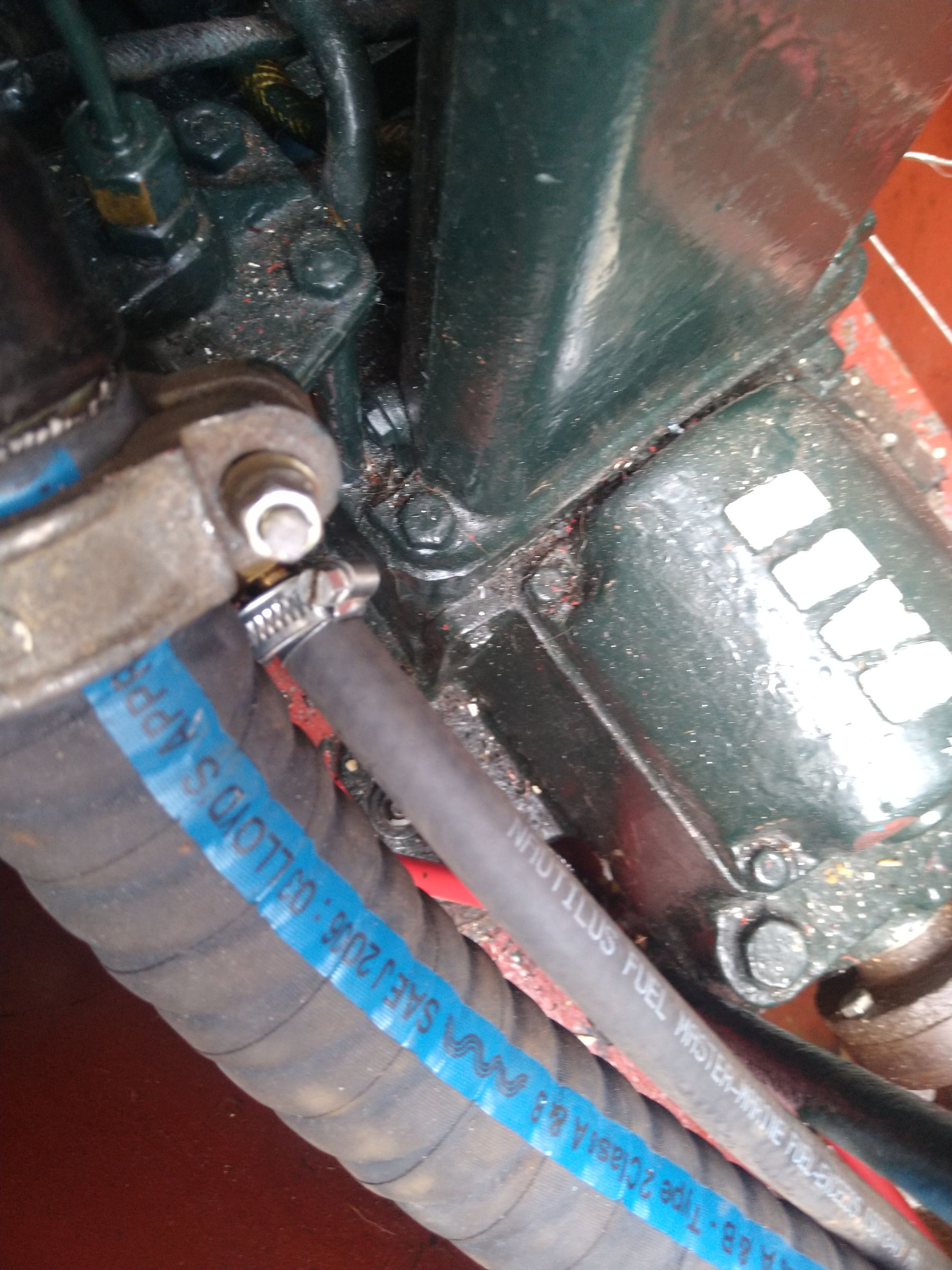

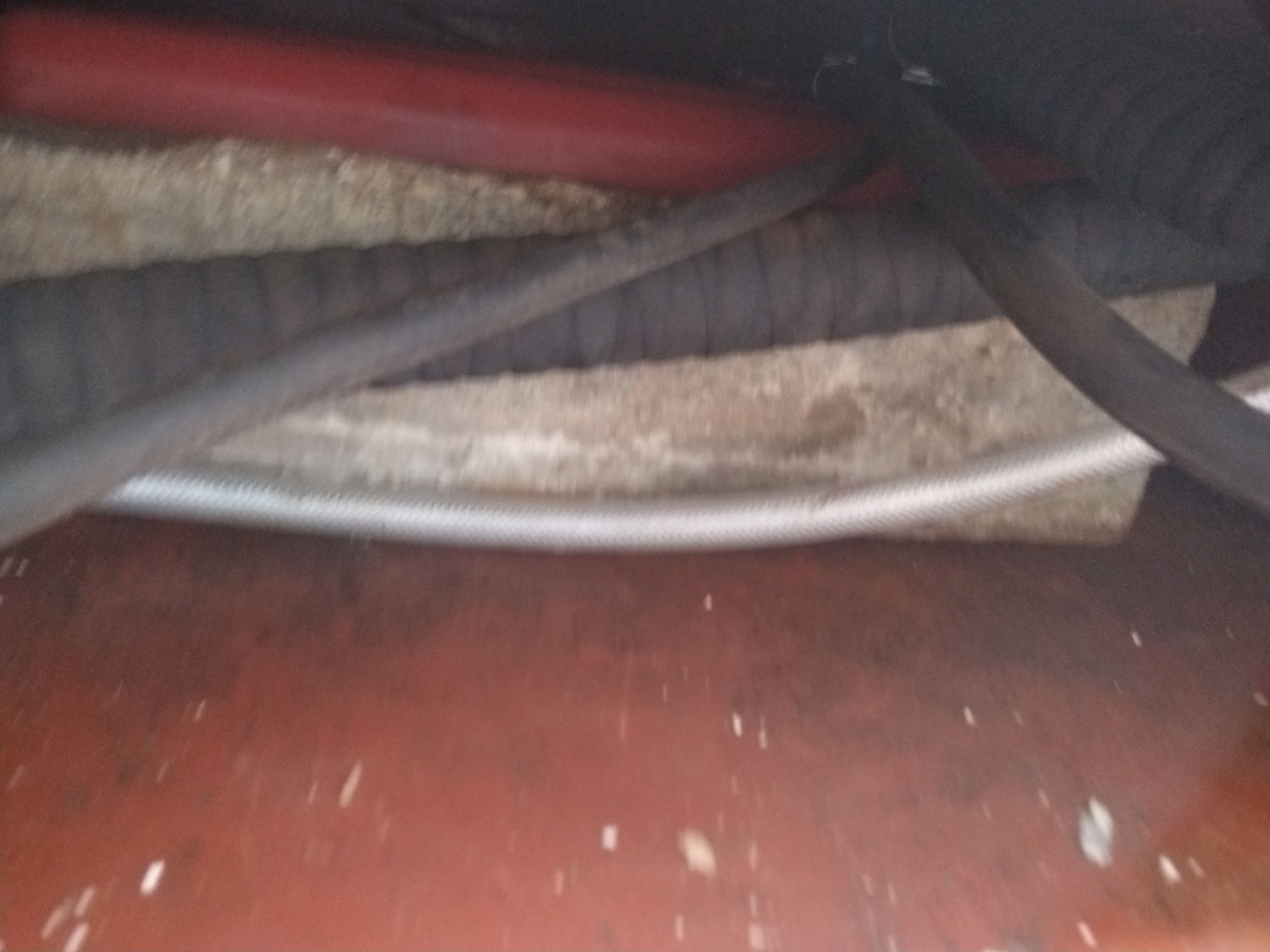
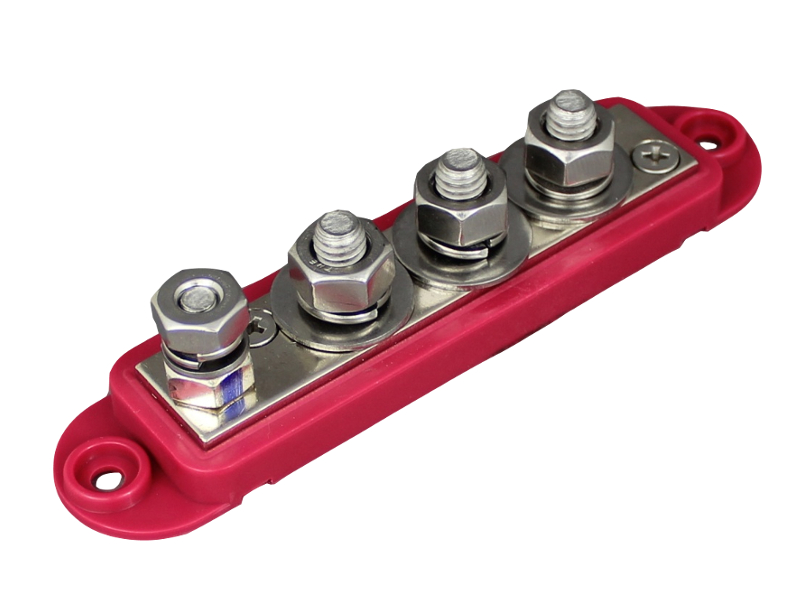
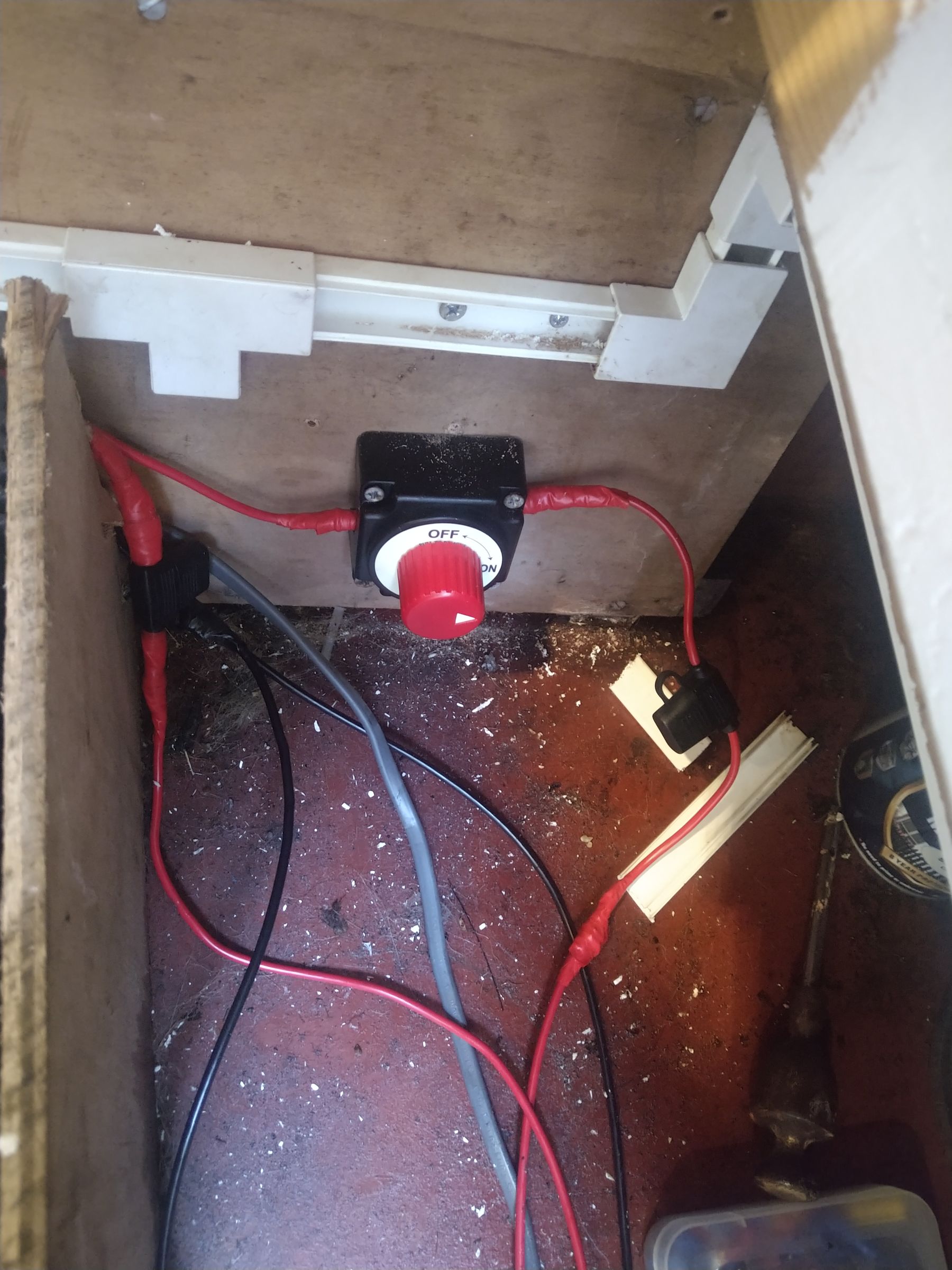
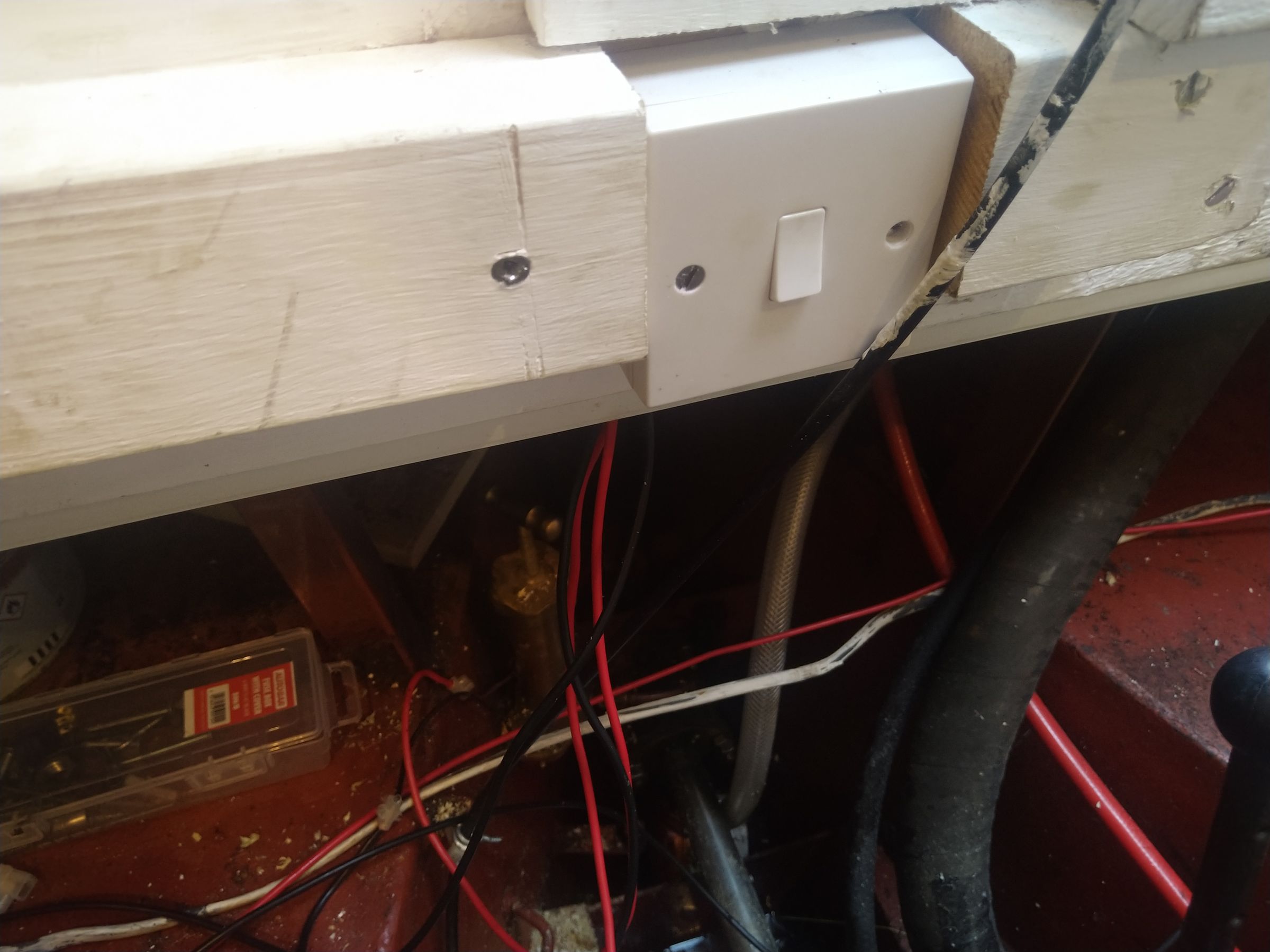
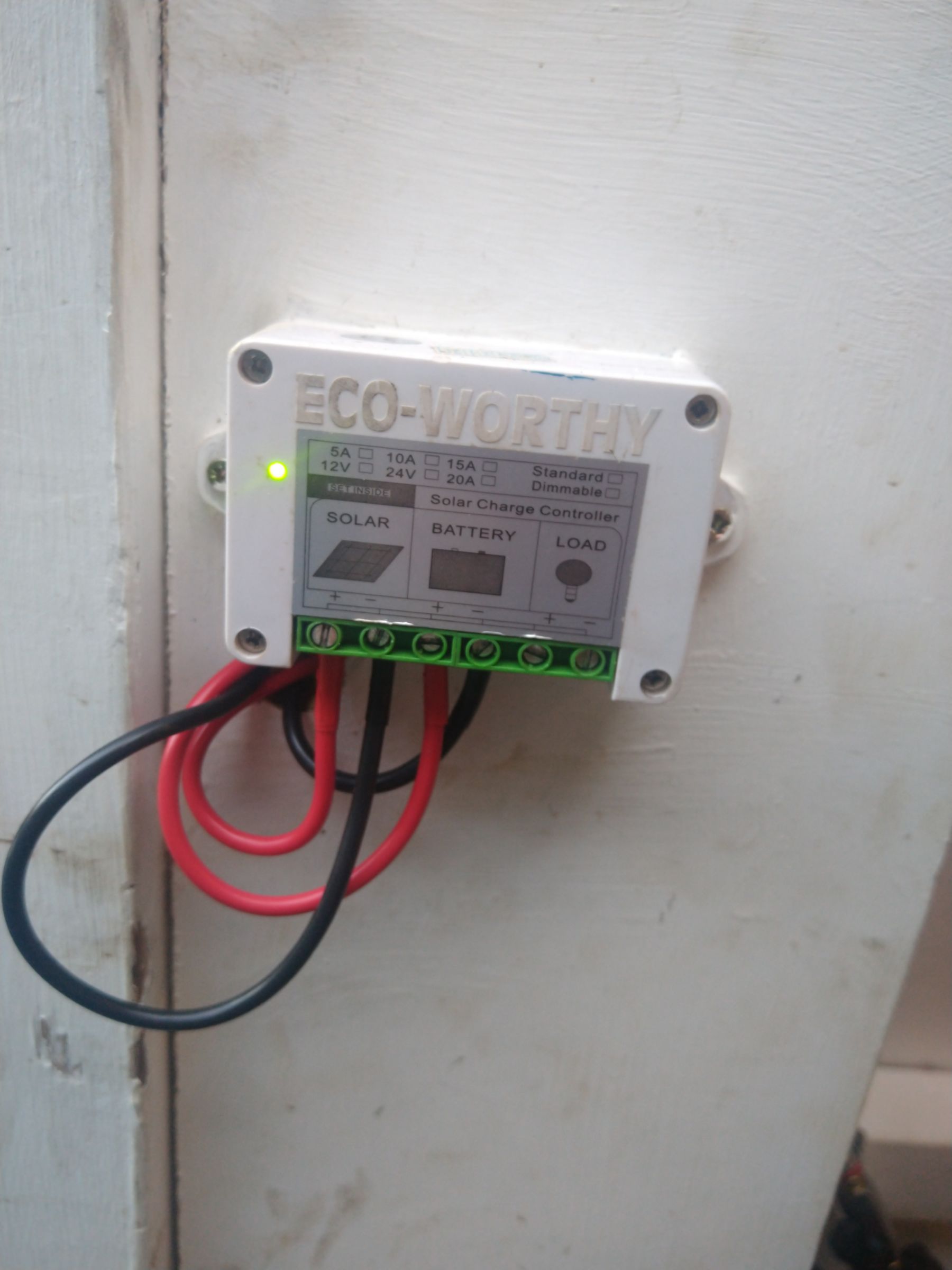
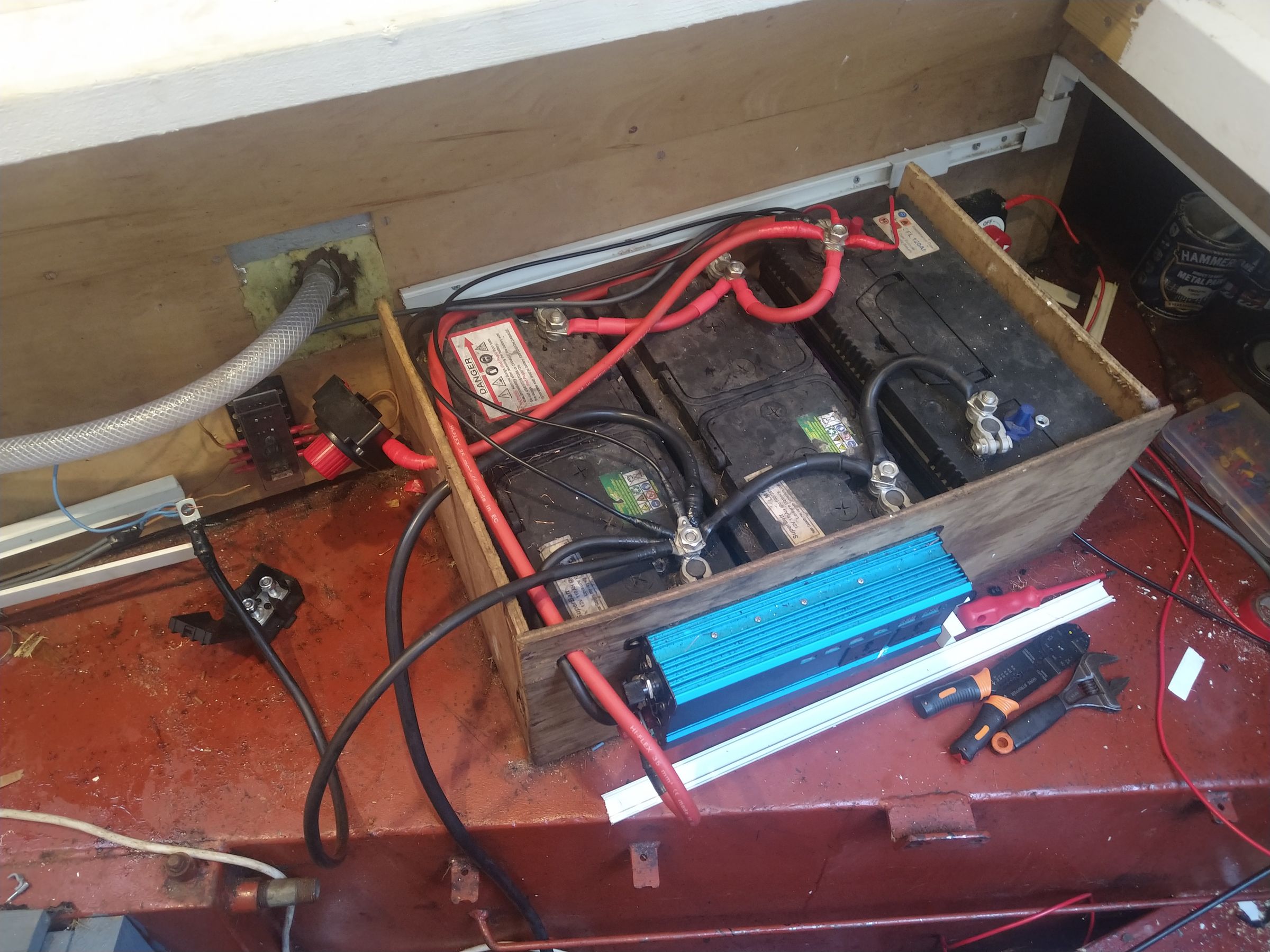
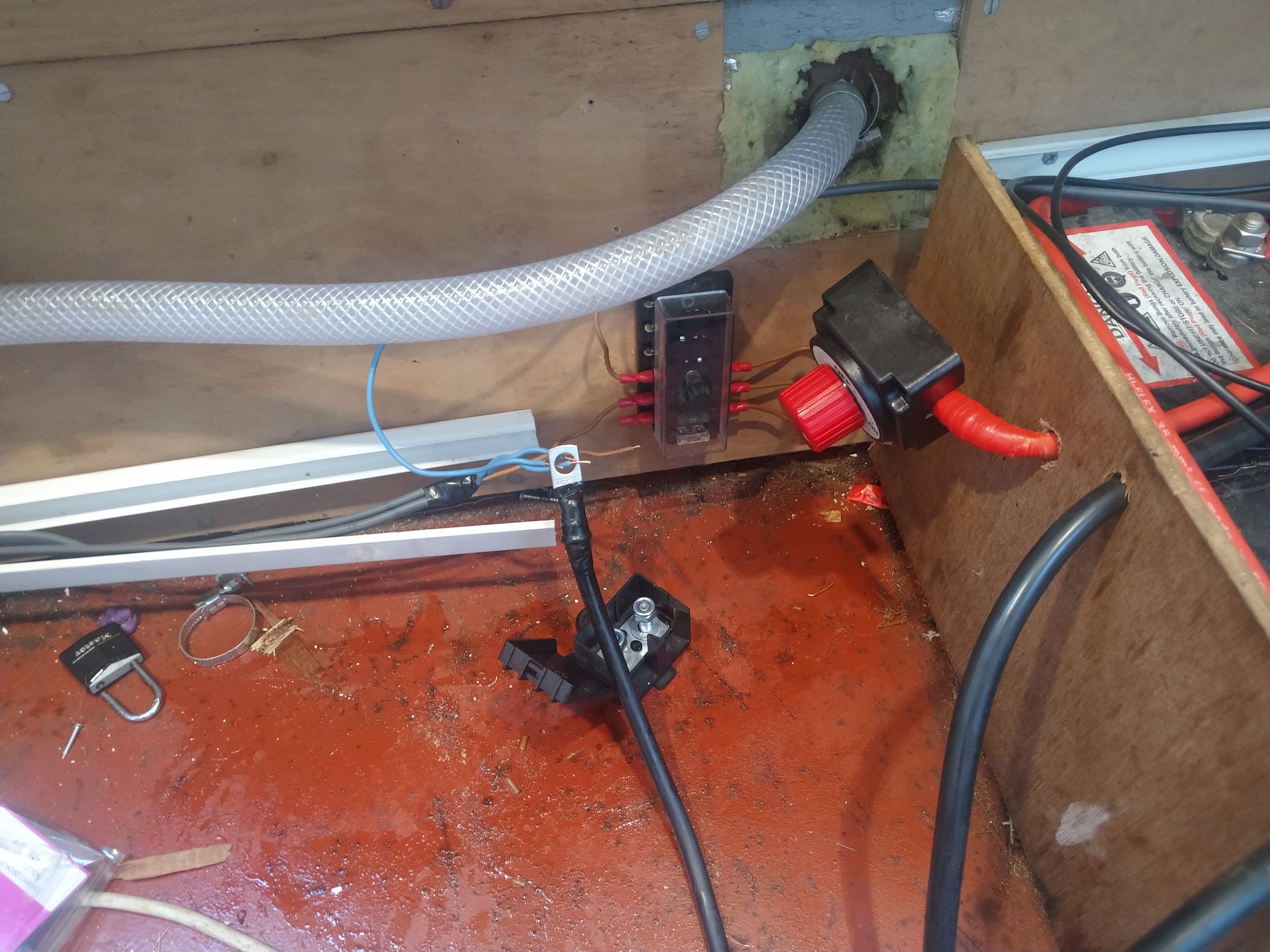
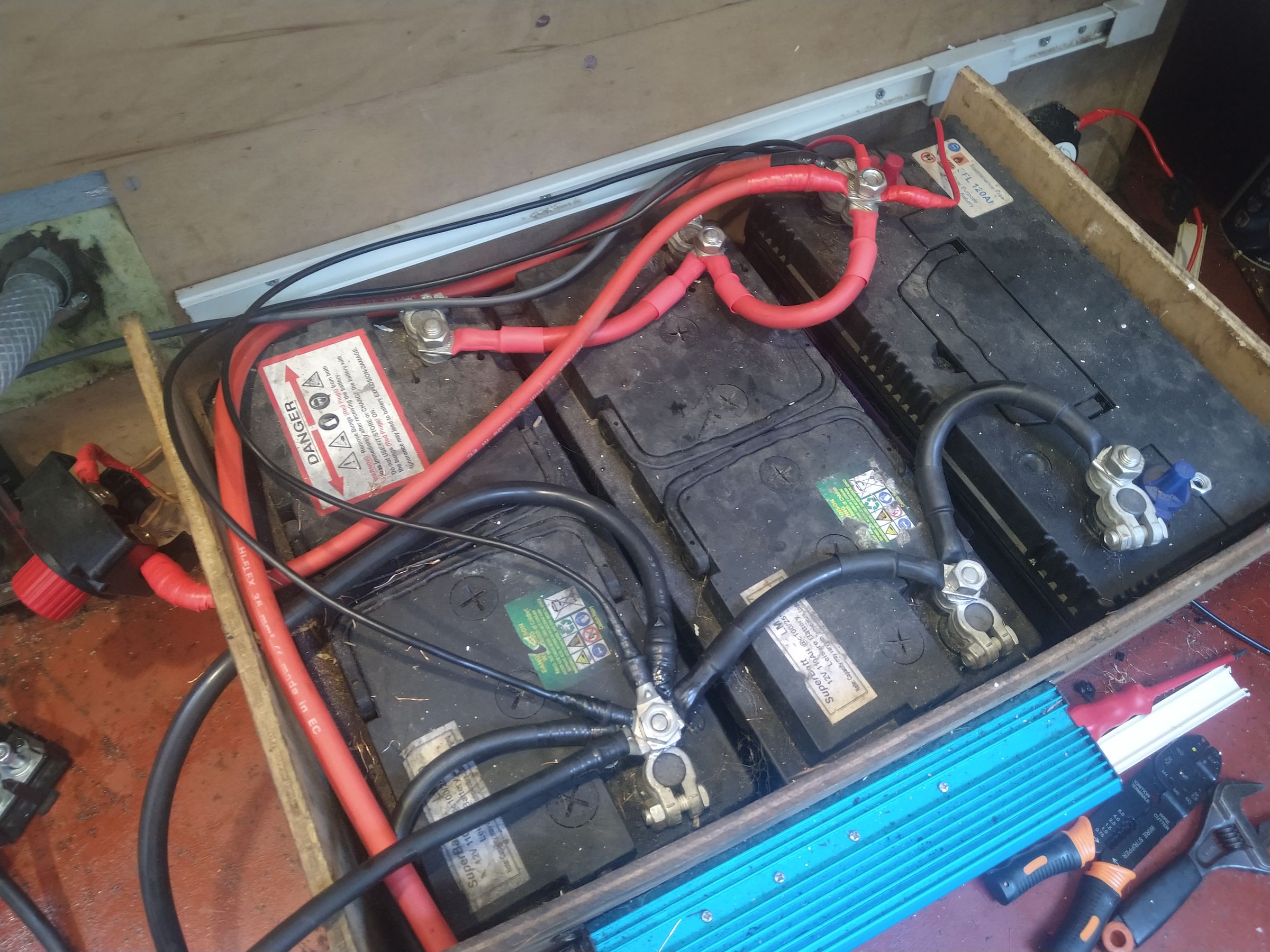
Charging batteries by generator and generator recommendations
in New to Boating?
Posted
Hi boaters,
I've got three batteries and two solar panels. Any advice on how to charge batteries by a generator ( how to wire up as well) and what generator to buy?